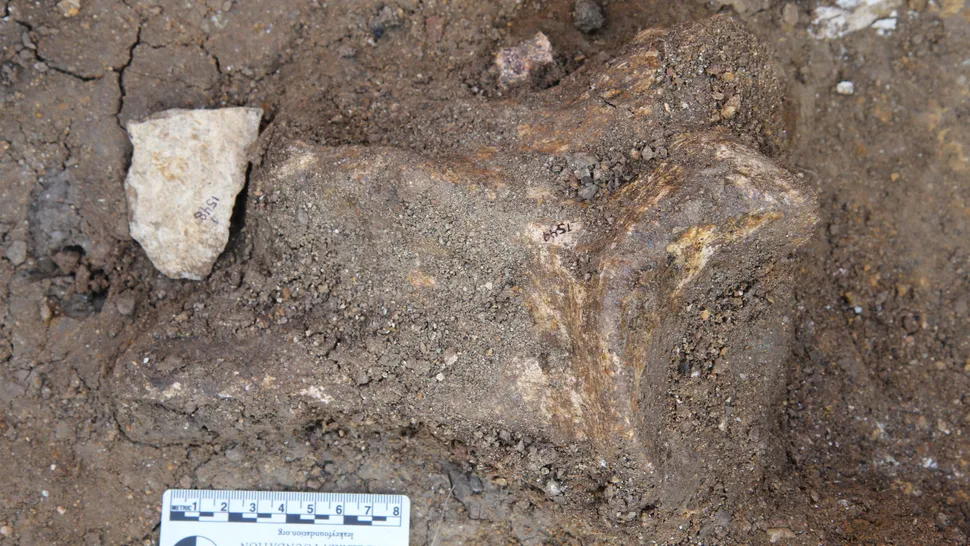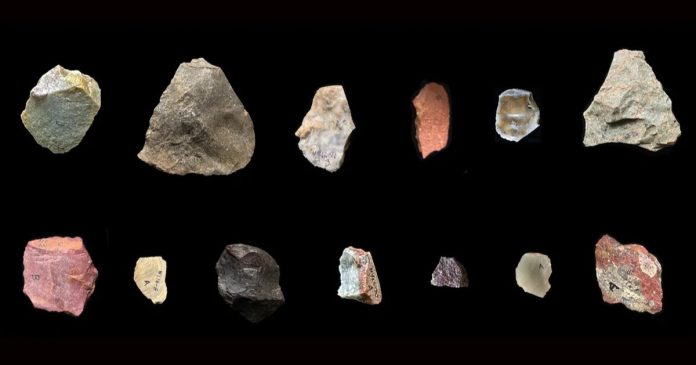Ancient Toolmakers Transported Premium Materials Over Unexpected Distances
A groundbreaking study of early stone tools has revealed our ancient human relatives possessed far greater planning abilities and environmental knowledge than previously documented. Research from key African archaeological sites demonstrates that early humans selectively sourced specific rock types from distant locations—pushing back evidence of strategic resource transport by 600,000 years.
Key Findings from the Nyayanga Site
- Material Quality Matters: At Kenya’s Nyayanga site (dated 2.6–3 million years ago), hominins avoided soft local stones unsuitable for processing tough materials like hippopotamus hide. Instead, they consistently used durable quartzite and rhyolite transported from streambeds and outcrops over 8 miles (13 kilometers) away.
- Functional Imperative: Local Nyayanga rocks produced tools that dulled quickly or shattered during pounding. Imported quartzite and rhyolite provided the necessary hardness and fracture properties for effective butchery and plant processing.
- Revising the Timeline: This discovery represents the oldest confirmed evidence of long-distance stone transport, occurring 600,000 years earlier than prior evidence from Kanjera South (also in Kenya).

Table 1: Comparison of Rock Properties and Sources at Nyayanga
| Rock Type | Source Distance | Suitability for Toolmaking | Primary Tool Uses |
|---|---|---|---|
| Local Rocks | On-site/Immediate vicinity | Poor: Soft, dulled quickly, prone to shattering | Ineffective for heavy-duty tasks |
| Quartzite | ~8 miles (13 km) away | Excellent: Hard, durable, produced sharp edges | Butchery, slicing tough hides |
| Rhyolite | ~8 miles (13 km) away | Excellent: Brittle enough for clean flaking, durable | Cutting, scraping, pounding |
Evidence of Complex Cognition and Planning
- Mental Mapping: Transporting materials over such distances implies a detailed cognitive map of the landscape and knowledge of resource locations far beyond immediate sight.
- Foresight and Intent: Hominins planned excursions to procure suitable materials before engaging in toolmaking or butchery activities at Nyayanga, demonstrating goal-directed behavior and anticipation of future needs.
- Beyond Primate Comparisons: While chimpanzees transport stones short distances (typically under 2 km), the consistent 8+ mile journeys at Nyayanga represent a significant evolutionary leap in planning depth and logistical capability.
Broader Implications for Early Human Behavior
- Dietary Expansion: Access to high-quality tools enabled hominins to process large, tough animals (like hippos) and diverse plant materials, significantly broadening their dietary niche and adaptability.
- Potential Toolmaker Diversity: The discovery of Paranthropus teeth alongside Oldowan tools at Nyayanga challenges the long-held assumption that only early Homo made and transported such tools. This suggests multiple hominin lineages may have possessed these advanced cognitive capacities.
- Color Preferences in Later Periods: A separate study in Eswatini showed that by the Middle and Later Stone Age (40,000–2,000 years ago), humans transported stones like red jasper and green chalcedony up to 100 km, indicating color or visual properties became significant factors alongside functional suitability.
Table 2: Evolution of Stone Transport Behaviors in Early Humans
| Time Period | Key Sites | Transport Distance | Material Selection Criteria | Cognitive Implications |
|---|---|---|---|---|
| ~3.4 million years ago | Dikika, Ethiopia | Minimal (local stones) | Functional (sharp edges) | Basic tool use (cut marks on bones) |
| ~2.6–3 million years ago | Nyayanga, Kenya | 8+ miles (13 km) | Functional durability (quartzite, rhyolite) | Mental mapping, future planning |
| 40,000–2,000 years ago | Eswatini sites | 30–100 km | Functional + Color/Visual (jasper, chalcedony) | Symbolic/aesthetic considerations |
Significance: The Foundations of Human Technology
This research fundamentally changes our understanding of early human cognition and technological dependence:
- Technology as an Adaptive Strategy: The intentional transport of raw materials underscores that tool use and the underlying planning were central to hominin adaptation nearly from the start of stone tool production.
- Cognitive Threshold Crossed: The ability to conceive of a future need, remember distant resource locations, and execute a plan to retrieve them represents a major milestone in cognitive evolution, previously attributed only to later hominins.
- Enduring Human Trait: As Dr. Emma Finestone (Cleveland Museum of Natural History) states: “Humans have always relied on tools to solve adaptive challenges. By understanding how this relationship began, we can better see our connection to it today”.
Unresolved Question: While the transported tools are firmly linked to processing large animals like hippos at Nyayanga, definitive attribution to a specific hominin species (Homo vs. Paranthropus) awaits discovery of a fossil in the act of toolmaking or tool use. This discovery illuminates the deep roots of human ingenuity and our species’ enduring reliance on strategic technology to overcome environmental challenges.

